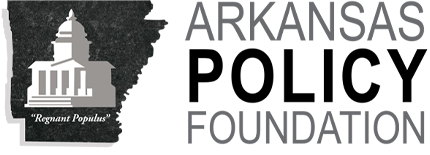“State Line Road is the boundary that separates the Arkansas and Texas sides of Texarkana, a border town … State Line, to the casual observer, is merely another road separating two states. But for those in the neighborhood, the road represents something of a great divide.” Policy Foundation, 20071
(November 2014) A new book from the Univ. of Oklahoma Press cites the Policy Foundation on economic conditions and tax rates along the Arkansas-Texas border, one example of an intranational borderland, according to author Dr. Derek R. Everett, adjunct professor at Colorado State University.
Creating The American West: Boundaries and Borderlands (Norman: Univ. of Oklahoma Press,2 2014) examines a “major theme in the history of state boundaries … the question of whether to use geometric or geographic lines–in other words, lines corresponding to parallels and meridians or those fashioned by natural features.” Dr. Everett, a scholar, shows “geography gave way to geometry and transformed the West. The geometric approach was seen at the time as the most practical method of organizing new states in a speedy and efficient manner.” These include Arkansas’ western border.
Boundaries “continue to complicate a host of (policy) issues including water rights, taxes, political representation and immigration,” notes the Univ. of Oklahoma Press, founded in 1929 and known for its Native American works.
Boundaries, Tax Rates & “Divergent Economic Opportunities”
Dr. Everett’s 302-page book includes a 24-page chapter,3 including maps, on the history of Arkansas’ western boundary. He explains how Native Americans (Choctaws and Cherokees), in the 1817-1828 period, “secured a line considerably more favorable to their own interests than early American residents of Arkansas imagined possible, much to their frustration.” The federal government “used tribal treaties rather than legislation to drag the western boundary of Arkansas more than forty miles eastward,” land that is part of modern-day Oklahoma. “Native cultures,” Dr. Everett notes, “proved
adept at manipulating the boundary-making process to their own ends, much to the frustration of those who hoped to contain such cultures through the same means.” These included the now-defunct Arkansas Gazette paper.4
Arkansas is also discussed in the book’s conclusion. intranational borderlands. These originate “with any division within a country, around which emerges a region whose inhabitants experience both the obstacles and opportunities inherent in any marginal place where two or more authorities meet and often overlap.” (p. 221) Texarkana is one example.
“The residents of Texarkana,” Dr. Everett writes, “experience divergent economic opportunities depending on whether they live on the Texas or Arkansas side of State Line Road.” The book cites the Policy Foundation5 and notes, “To level the (economic) playing field in this bifurcated town, in 1977 the state government of Arkansas ceased collecting income tax from their half, balancing Texas’s lack of an income tax. While the situation evened out somewhat after that decision, the Texas side of the city has long been the faster-growing one.” No international border bisects Texarkana, “but its residents know firsthand that their state boundary can still mean complications.” (pp. 224-25) These include fewer jobs and lower incomes.6
Thinking On The Margin
Economic marginalism7 explains differences in the values of goods and services by analyzing their non-primary utility. The classic example is the diamonds-water comparison: the former are more expensive because they have greater marginal utility. Marginal reasoning also has practical uses: which of your goods and services have greater total and marginal utility?
Another use: consider boundaries as margins. Which state has lower tax rates on capital investment? Which state’s work force is more highly skilled?
–Greg Kaza
1 “A Texarkana Tax Tale,” National Review Online, May 2, 2007
2 http://www.oupress.com/
3 Chapter 3: “On The Extreme Frontier: The Western Arkansas Boundary” (pp. 70-93)
4 Arkansas Gazette, April 10, 1827, 3.
5 The absence of a Texas income tax is one factor contributing to above-average job creation rates in the current expansion. Arkansas, by contrast, trails the U.S. See “States Without Capital Gains Taxes Create Jobs At Higher Rates” (April 2014); “States Of Employment Growth” (April 2013); and “Arkansas Employment At 2004 Level” (June 2010). www.arkansaspolicyfoundation.org
6 Texarkana straddles Bowie County, TX., and Miller County, AR. Per capita personal income in Bowie County was 82% of the U.S. (2012) versus 78% in Miller County. U.S. Bureau of Economic Analysis.
7 Marginalism originated with the British economist William Stanley Jevons (1835-1882) and the Austrian Carl Menger (1840-1921).









